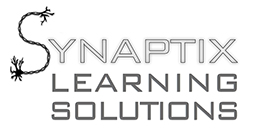Key Concepts
The brain contains 100 billion neurons, or electrically active brain cells, and many more inactive support cells. Each has onn average 1,000 connections to other cells. These connections are called synapses and form complex networks, dependent on which cells they are connected to and the nature of the connections.
Neuroscientists have discovered almost 100 different kinds of chemical transmitters that pass messages at these synapses, each with up to ten different kinds of receptors that determine what the receiving cell does with that message. And we add more complexity to the picture daily! Neuroscience proves that the brain has unlimited learning potential.
Learning is the most essential ingredient for improving and optimizing the performance of an organization’s workforce, improving productivity, and affecting the bottom line in a positive way.
Our learning solutions leverage our understanding of how key components of the brain’s memory system work to enhance retention of learned information. This way, learners retain more of what they learn, regardless of the learning modality (classroom, online, self paced, etc.). We include observational research from the cognitive realm, meshing how people are observed to learn, with what is going on in their brains. Our systems optimize content delivery so that learners can readily apply learning on the job.
Cluster Triggers
Using Cluster Triggers, We Build Training Units of Co-Networked Concepts or Steps to Speed Up Learning
Memories aren’t single units of information stored in a single neuron. They are a specific pattern of activity across an entire network of neurons at specific synapses. The cells in this network only represent that specific memory when those exact synapses are activated in that specific manner. The network will represent a different memory if the sequence is different or some of the connections different.
Similar memories involve many of the same cells and synapses. For example, the memories for all of the steps involved in brushing your teeth share many network elements. You trigger these memories when you pick up your toothpaste and your toothbrushing behavioral program runs autonomously thereafter.
By clustering training into units according to easily co-networked concepts or steps instead of convenience or the sequence they are performed we speed up the learning process. Then we bind that cluster of subject matter elements to a common trigger that is typically present whenever the task is performed or the concept applied. This ensures that the entire cluster can be recalled and applied when it is most required.
Sparsity
We can learn a lot about neural networks from trees.
Yes, trees!
 Look at a picture of a brain cell. This picture of a pyramidal cell is a great example. Now look at a bare tree (in the winter). See any similarities? Imagine a dense forest with the trees’ branches touching and communicating where they touch and that’s a good place to start envisioning neural networks, though the analogy is very rough.
Look at a picture of a brain cell. This picture of a pyramidal cell is a great example. Now look at a bare tree (in the winter). See any similarities? Imagine a dense forest with the trees’ branches touching and communicating where they touch and that’s a good place to start envisioning neural networks, though the analogy is very rough.
There are many principles we can derive from these similarities- a key one is sparsity. Sparsity is the opposite of density. New memories, which are network states, are more likely to form and strengthen at an optimal level of sparsity. Picture a single tree standing on its own in an empty field. That’s the extreme end of sparsity. The chances that the tree’s branches are going to touch another tree’s branches are slim to none.
Similarly, it is harder to form new connections in a sparse network in your brain. Remember learning algebra the first time? Or a new language?
Synaptix measures the conceptual sparsity among the learners and designs learning around first seeding the network before building in clusters of new content.
In the dense canopy of the trillions of connections in the brain, it is difficult to identify build new conceptual networks. By considering the sparsity of connections around an idea we can build learning that is fit for purpose and easier to absorb and retain.
Repetition
You have to repeat information to recall it.
You have to repeat information to recall it.
This may seem obvious, but is often overlooked in learning design. When it is applied, it is often applied poorly, making the content tedious and boring.
So what is the optimal number of repetitions and when do you do it- right away or spread throughout the course?
Synaptix uses measured sparsity to answer these questions. If a concept needs to be added to an already healthy network, minimal repetition at a long interval is sufficient. But if the concept is very novel and the network around it is sparse, then more repetition is required.
Synaptix Learning Solutions’ design system applies our own empirical research to determine these variables and ensure that critical content is retained.
You have to repeat information to retain it.
These are just a few of the neuroscience and cognitive concepts behind the tools Synaptix Learning Solutions uses to optimize learning design. To find out about our tools and how they can help your business, please contact us directly. To learn more about the brain and the science behind our approach visit our brain page.




